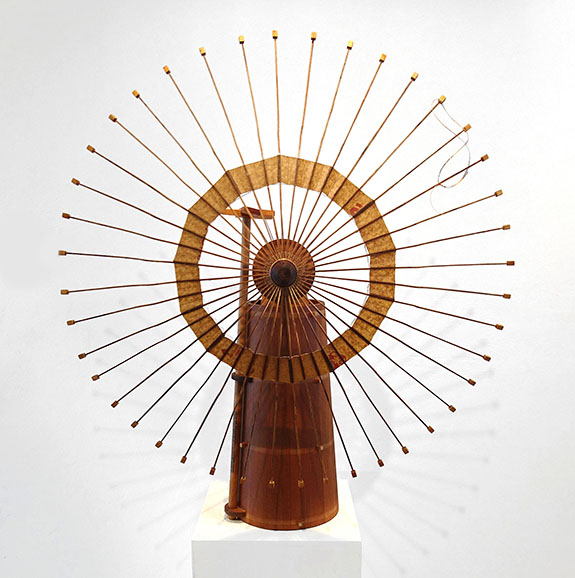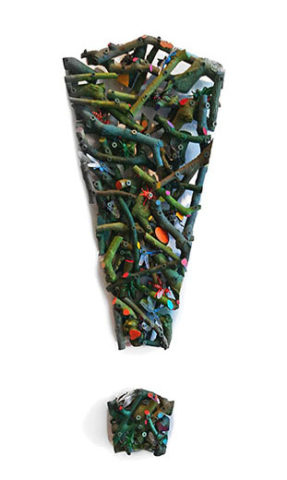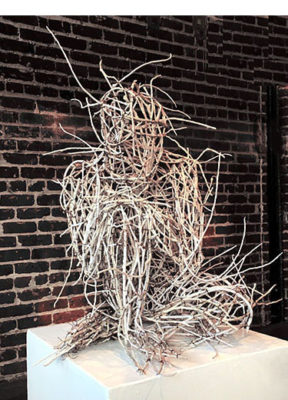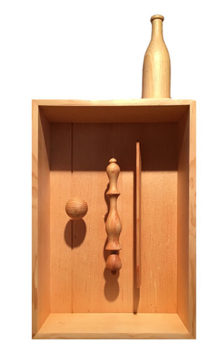
by Mikko Lautamo
Wood (mù) is the first element of the Chinese Wu Xing, a schema of five elements used to describe all aspects of existence, from aesthetic principles and historical events to political structures, social norms and much else. That it is also an element of growth, strength and flexibility sums up nicely the varied wood-based works on view in this exhibition of the same title. Still, it’s a rather flimsy peg on which to hang a show. That is because exhibitions based around the use of a single material all too often lack conceptual heft. My advice: Don’t let this simple premise mislead you. This is a powerhouse showing of A-list, mid- and late-career artists.
Gustavo Ramos Rivera’s Stargazer is the largest and liveliest of the works on view. A construction mixing bright primary colors with playful, gangly sticks and lopsided boxes, this 
Robert Brady’s pair of gaunt wood sculptures, Seated Figure with Ovid and Seated Figure with Tie, exhibit a wayward gravitas, their emaciated features pointing to the twin influences of Giacometti and Stephen de Staebler – and, to the illness that as a teenager left him temporarily disabled. It’s one of the highlights of the show.
Tony May submits a parasol-shaped kinetic sculpture made from found objects; Mike Henderson, an abstract painting on wood; William T. Wiley, a printing block/self-portrait, marked as such by the artist’s tall, lean figure and by the dunce cap that’s long been a fixture in

# # #
“Mù (Wood) Show” @ b. sakata garo through February 3, 2018.
About the Author:
Mikko Lautamo is an artist and educator from Sacramento. His work uses computer code to create interactive and never-repeating installations centering on blended biological, social, and economic systems. He teaches Electronic Art at Sac State and has exhibited work in the United States, Australia and online. His work can be viewed on Vimeo.